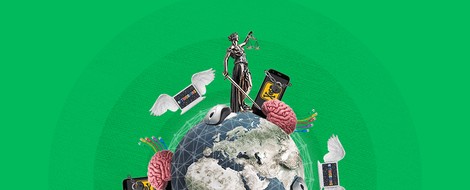Your podcast discovery platform
Curious minds select the most fascinating podcasts from around the world. Discover hand-piqd audio recommendations on your favorite topics.

piqer for: Global finds Technology and society
Prague-based media development worker from Poland with a journalistic background. Previously worked on digital issues in Brussels. Piqs about digital issues, digital rights, data protection, new trends in journalism and anything else that grabs my attention.
How The Machine Age Is Transforming Public Space
Brick and mortar banks have changed substantially over the past ten years. Instead of service counters with staff sitting behind, now you will be greeted by rows of coloured ATMs lining the wall. In fact, many branches no longer have any counters at all. As you walk in, you may be met by staff strolling around with tablets.
“It’s not just banks. Automation has also changed how people shop, park, fly, and more. In the process, it has reshaped the architecture that contains those experiences — making them more efficient, often, but also putting machines above people,” reads the article published by the Atlantic.
Carolina A. Miranda, a staff writer at the L.A. Times, touches upon very interesting, yet not so frequently discussed aspects of automation, mainly its integration and manifestation in architecture and urban design. She focuses on how the growing use of technology changes our surroundings and affects our daily lives. She describes the so-called “post-human architecture” in which the layouts of public spaces are adapted to facilitate control and supervision of machines, rather than human interaction.
Think about self-service checkouts, for example. In many shops, you can go through the whole purchasing process without any human interaction, with a single salesclerk circling around the self-service kiosk, instead of many working at the register. You are definitely going to see more of that in the coming years. In fact, it’s forecast that the number of self-service checkouts will double between 2016 and 2021, increasing from around 240,000 to 468,000 units globally.
“Automation design prioritizes machines over humans,” writes Miranda, and “that impacts customers who have to deal with the machines, but it impacts the workers even more.” And this impact will be even greater as the technology spreads to new areas, like medical care or hospital services.
Stay up to date – with a newsletter from your channel on Technology and society.
